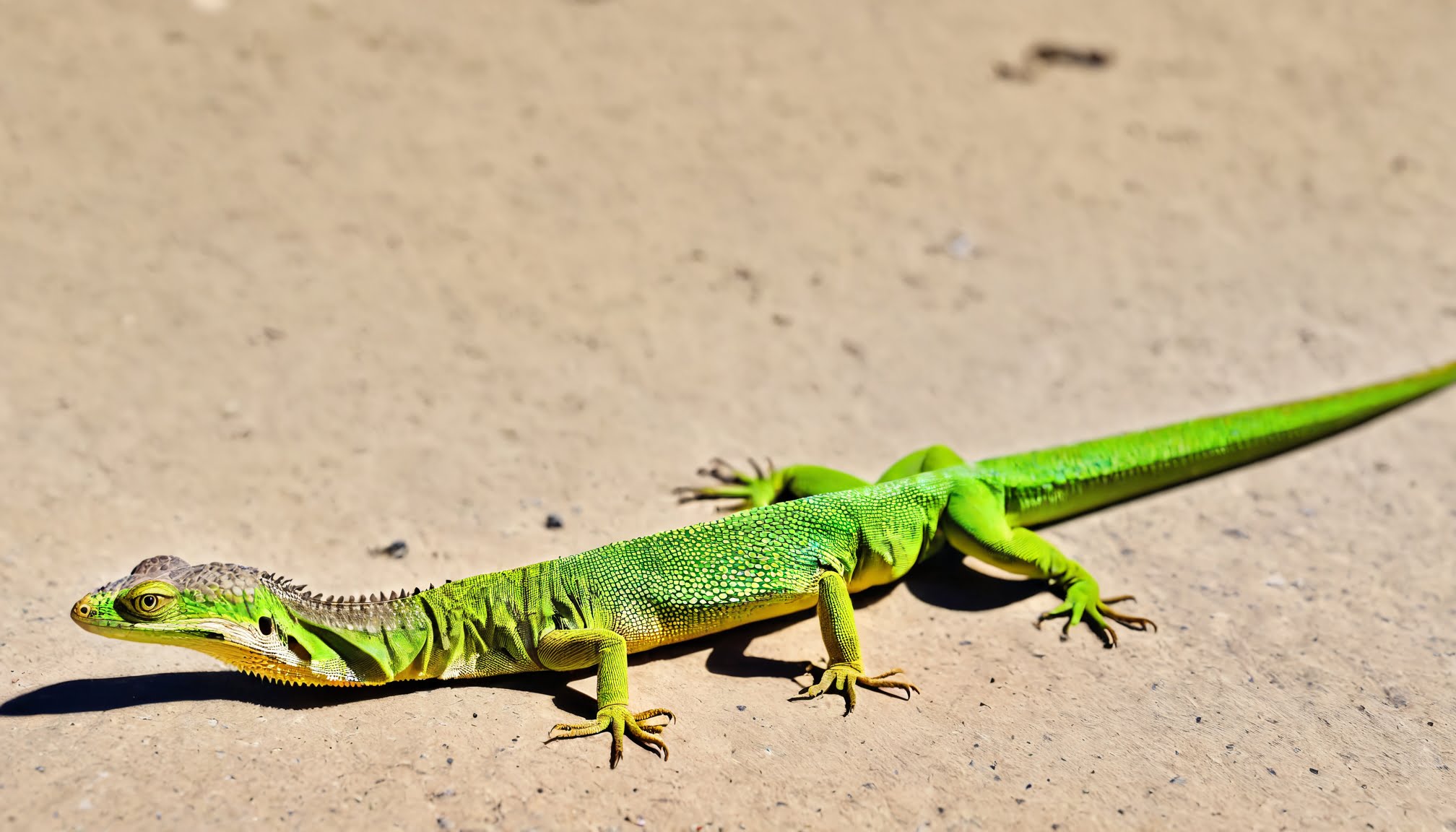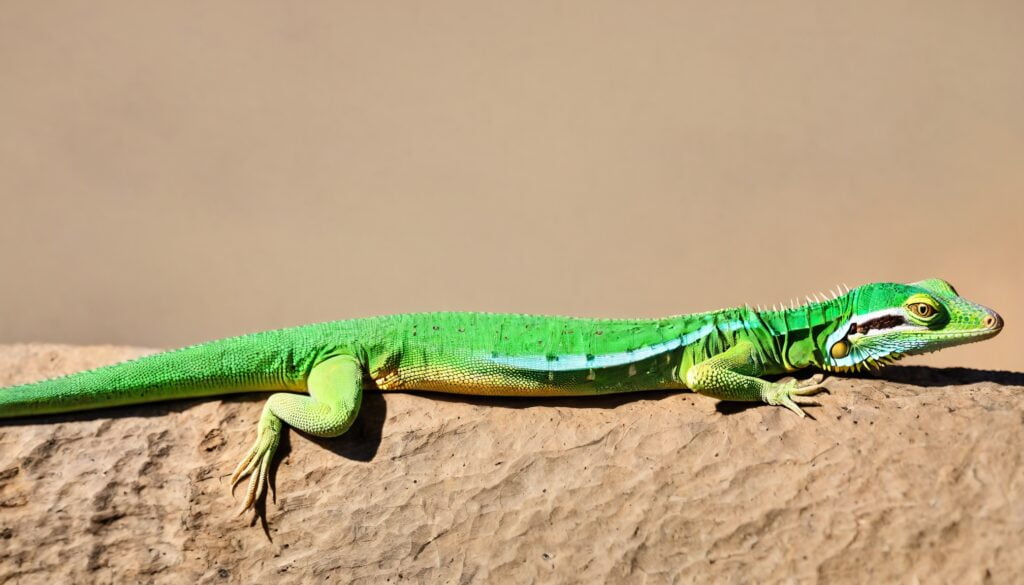When it comes to keeping long lizards as pets, ensuring they have a healthy environment is crucial for their well-being. A well-designed habitat not only mimics their natural surroundings but also supports their physical and mental health. In this guide, we’ll explore eight key insights to help you create the perfect habitat for your long lizard.
1. Understanding the Natural Habitat
Long lizards, depending on their species, are native to a variety of environments, ranging from dense forests to arid deserts. Understanding where your specific lizard species comes from is the first step in replicating those conditions.
For example, a lizard from a tropical rainforest will require high humidity and ample vegetation, while a desert species will thrive in a drier, sandier environment.
2. Choosing the Right Enclosure
The size and type of enclosure play a significant role in the health of your long lizard. A spacious tank with proper ventilation is essential.
For long lizards, horizontal space is often more important than vertical space, as they need room to move around.
3. Temperature Control
A habitat with a proper temperature gradient allows your long lizard to move between warmer and cooler areas as needed.
Typically, one end of the tank should have a basking spot with a heat lamp, while the other end remains cooler.
4. Humidity Levels
Maintaining the right humidity levels is vital, especially for long lizards from tropical regions. High humidity supports proper shedding and hydration.
Depending on the species, you may need to mist the enclosure regularly or use a humidifier. Monitoring humidity levels with a hygrometer can help ensure they remain within the optimal range.
5. Substrate Selection
The substrate, or the material that lines the bottom of the enclosure, should be chosen based on the natural environment of your long lizard.
For desert species, sand or a sand-soil mix may be appropriate, while forest-dwelling lizards might prefer coconut fiber or bark. The substrate should be easy to clean and free of harmful chemicals.
6. Providing Hiding Spots
Long lizards require hiding spots to feel secure. Without adequate hiding places, they may become stressed, which can lead to health issues.
Use rocks, logs, or commercially available hides to create secluded areas within the enclosure. Ensure these hiding spots are large enough for your lizard to comfortably retreat into.
7. Lighting Needs
Proper lighting is essential for your long lizard’s health. UVB lighting is necessary for calcium absorption and bone health, as it enables the synthesis of vitamin D3.
The UVB light should be replaced every six months, even if it still appears functional, as its effectiveness diminishes over time.
8. Enrichment and Stimulation
A stimulating environment prevents boredom and encourages natural behaviors. You can add climbing branches, rocks, and live plants to the habitat.
Changing the layout of the enclosure periodically or introducing new elements can also keep your long lizard mentally stimulated and physically active.

Conclusion
understanding their natural environment, providing the right conditions, and ensuring adequate stimulation, you can create a space that not only meets their physical needs but also keeps them content and engaged. Remember, a well-cared-for lizard is a thriving lizard.
FAQs: Long Lizard Habitat
What size enclosure does a long lizard need?
The size of the enclosure depends on the specific species of long lizard.
For larger species, a tank measuring 4–6 feet in length is ideal, providing ample space for movement.
How do I maintain the correct temperature in my lizard’s habitat?
You can maintain the proper temperature by setting up a heat gradient within the enclosure. Use a heat lamp or ceramic heater to create a warm basking area, and ensure the opposite end of the enclosure remains cooler.
A thermostat and digital thermometer will help you monitor and adjust the temperature as needed.
What humidity level is required for a long lizard?
Tropical lizards typically need humidity levels between 70% and 90%, while desert species thrive in much lower humidity, around 20% to 40%.
A hygrometer can help you monitor and maintain the appropriate humidity levels in the enclosure.
Can I use sand as a substrate for all long lizards?
No, sand is only suitable for desert-dwelling lizards. For tropical species, a substrate like coconut fiber, bark, or soil is more appropriate.
How often should I clean my lizard’s enclosure?
A thorough cleaning, including replacing the substrate and disinfecting the tank, should be done every 4–6 weeks.
Do long lizards need UVB lighting?
Yes, most long lizards require UVB lighting to synthesize vitamin D3, which is crucial for calcium absorption and bone health.
Ensure your lizard has access to UVB light for about 10–12 hours a day, and replace the bulb every six months to maintain its effectiveness.
How can I provide enrichment for my long lizard?
Enrichment can include climbing branches, rocks, and live plants. You can also rearrange the enclosure layout periodically or introduce new objects to keep your lizard engaged.
Providing hiding spots and varying their diet with live insects can also add stimulation.
What should I do if my long lizard isn’t eating?
A lizard’s appetite can decrease due to stress, improper temperatures, illness, or shedding.
If the lizard continues to refuse food, consult a reptile veterinarian to rule out any health issues.
Are Long-Tailed Lizards Venomous?
No, long-tailed lizards are not venomous. These reptiles are harmless to humans and other animals, relying on their speed and agility to evade predators rather than venom.
Long-tailed lizards are popular pets due to their non-aggressive nature and ease of care.
If you’re considering adding a long-tailed lizard to your home, rest assured that they pose no venomous threat, making them a safe and fascinating choice for reptile enthusiasts.
What is the Name of a Long-Tailed Lizard?
The name of a long-tailed lizard can vary depending on the species, but one of the most commonly recognized is the Takydromus, also known as the Asian grass lizard.
This species is famous for its incredibly long tail, which can be three times the length of its body.
If you’re curious about long-tailed lizards, understanding the unique traits of these species can help you identify and appreciate them in the wild or as pets.
Are Long-Tailed Grass Lizards Good Pets?
Long-tailed grass lizards can make excellent pets, especially for reptile enthusiasts seeking a low-maintenance companion.
These agile, active lizards are known for their distinctive long tails and fascinating behavior, making them a visually appealing addition to any home.
They thrive in a well-maintained environment with appropriate humidity and temperature levels, and their diet primarily consists of easily accessible insects.

